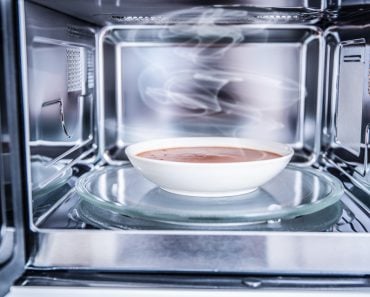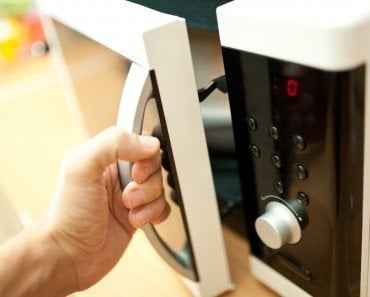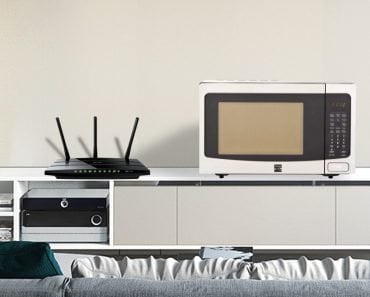Table of Contents (click to expand)
A microwave heats food from an ‘outside in’ manner with the help of heat and radiation. The cumulative effect can potentially leave cold spots in the food that become breeding grounds for bacteria.
The invention of the microwave has made life a lot easier and one is found in almost every household. The microwave produces high-frequency radio waves or microwaves that are reflected, transmitted, and absorbed by anything that comes across their path.
A microwave is safe to use if instructions are followed, but it is important to choose when to use a microwave and when to opt for a conventional oven.
Recommended Video for you:
Problem Of Uneven Heating In The Microwave
Microwaving unrefrigerated food can lead to health issues, as bacteria proliferate in unrefrigerated food. Microwave heat isn’t distributed evenly, so you might occasionally come across cold spots in your food, which is exactly where the problem begins.
It is advisable to not use the microwave to cook meaty food, as the uneven heat does not effectively kill the germs and bacteria, if any are present. An interesting point to note is that a microwave heats the food from the outside in. The combination of heat and radiation penetrates the food differently, as is seen from the study done by Culkin and Fung.
This manner of heating is one of the reasons why food might remain untouched by the microwave heat and radiation in the inner pockets, thus creating a suitable environment for bacteria and other microorganisms. The two studies discussed below should help clear up any doubts of how microwave heat affects the bacteria present in food.
The Case Of The Salmonella Outbreak
A study published in the American Journal of Epidemiology analyzed a Salmonella outbreak that occurred due to the reheating of pork in a microwave. Food items, such as meat, if kept un-refrigerated for a long time after cooking, become breeding grounds for bacteria and other microorganisms.
To being with, you need to choose whether to use a microwave or a conventional oven for reheating meat. If the food has been lying around for a few hours, it is advisable to reheat it in an oven. This was the problem for a salmonella outbreak after a community picnic in Juneau, Alaska.
Two roast pigs were delivered to Juneau from a restaurant in Seattle, Washington for the picnic. Pig #2 arrived late and was taken home by many of the guests, who later reheated it in their microwaves. A case-control study indicated that the illness was associated with eating meat from this second pig.
The study showed that 21 of the 46 people who had reheated the meat in a microwave became ill, while those who had used a conventional oven did not. Also, 11 of the 13 people had eaten the meat without re-heating in any way, and also fell ill. The meat was reheated for 3-5 minutes in a microwave with a rotating turntable. One point of concern was that the meat was transported from Seattle to Juneau in an un-refrigerated cargo plane and reached Juneau after 17-20 hours, owing to the flight delay.
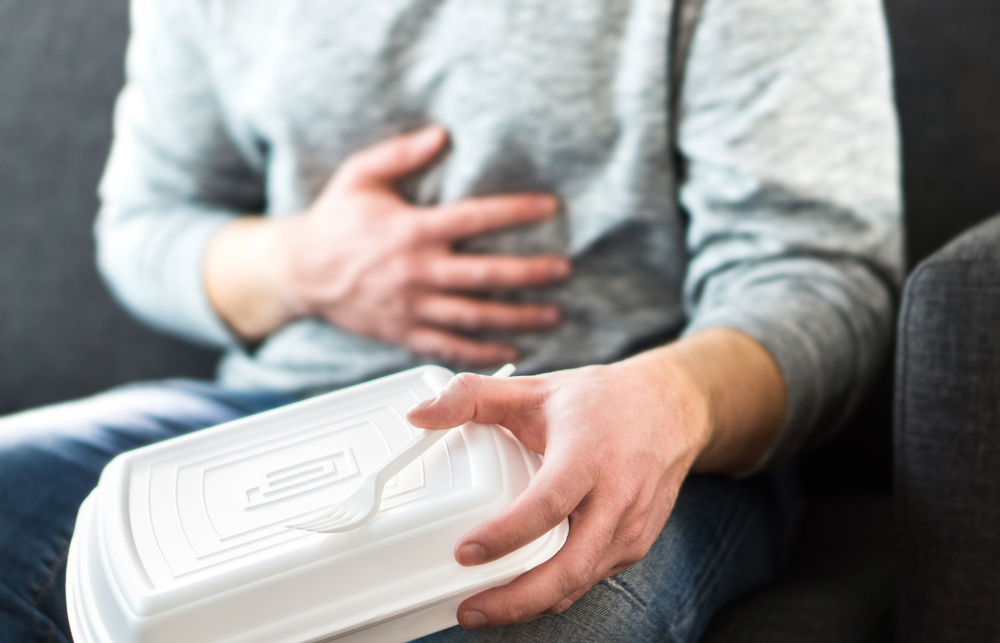
Pork is the second most common animal source of the bacterium Salmonella typhimurium and contamination can be the result of improper handling. The standard food handling procedures state that cooked meat, if not eaten within 2 hours, should be stored in temperatures above 60° C or below 10° C.
However, as the meat was un-refrigerated for such a long time, there was a strong possibility that bacteria had begun proliferating in the meat. Almost all these factors would eventually result in Salmonella contamination of the food, but it was found that reheating by conventional methods had a protective effect, as compared to reheating the pork in a microwave.
The uneven heating of the microwave kills bacteria, but many of the bacterial foci might survive, which are the focal points of infection; if not correctly handled, they can lead to secondary infections. Even standard sterilization procedures state that food must be heated to a certain temperature and for a certain length of time. The quick heating method of the microwave does not serve the purpose of sterilization, but this is often misinterpreted.
Presence Of Bacteria In Microwave-cooked Soup
A study was done by Culkin and Fung to check the destruction pattern of Escherichia coli and Salmonella typhimurium in microwave-cooked soup. Cultures of E. coli and S. typhimurium were added into tomato soup, vegetable soup, and beef broth in 3 beakers aseptically.

Temperature-sensitive strips that change from grey to black when the desired temperature had been reached in the soup were added to the 3 beakers.
The soup was tested for the survival of any bacterial strains in three regions of the soup, namely the top, middle, and bottom. A temperature profile for the three regions of tomato soup showed that the top layer had the coolest temperature, the middle had an intermediate temperature, and the bottom layer had the highest temperature. The graphs plotted for the survival of the bacteria in the 3 layers showed a very interesting finding—the organisms in the top layer had the lowest survival rate, despite the low temperature. The organisms in the middle layer had an intermediate survival rate, while the bottom layer had the highest survival rate of the organisms. The results were similar in vegetable soup and beef broth.
It was observed that the top region of the tomato soup did not show any detectable traces of E.coli at a temperature of 45° C and of S. typhimurium at 48° C. The study sheds light upon a common misconception of microwave heating—heat alone is not responsible for the death of microorganisms. If that were the case, then the bottom region with the highest temperature would be the one with the lowest bacterial survival rate. On the contrary, the top layer had the lowest survival, owing to the microwave’s radiation. The electromagnetic waves that enter the food from the top get absorbed by the various layers of food, so the intensity is reduced as it reaches the core. The heat dissipation that occurs at the top region does not allow for a higher temperature, but the higher intensity of radiation there facilitates microbial destruction. The study proposed that there are factors other than heat that have an effect on microbes; microwave radiation is responsible for microbe destruction, along with heat.
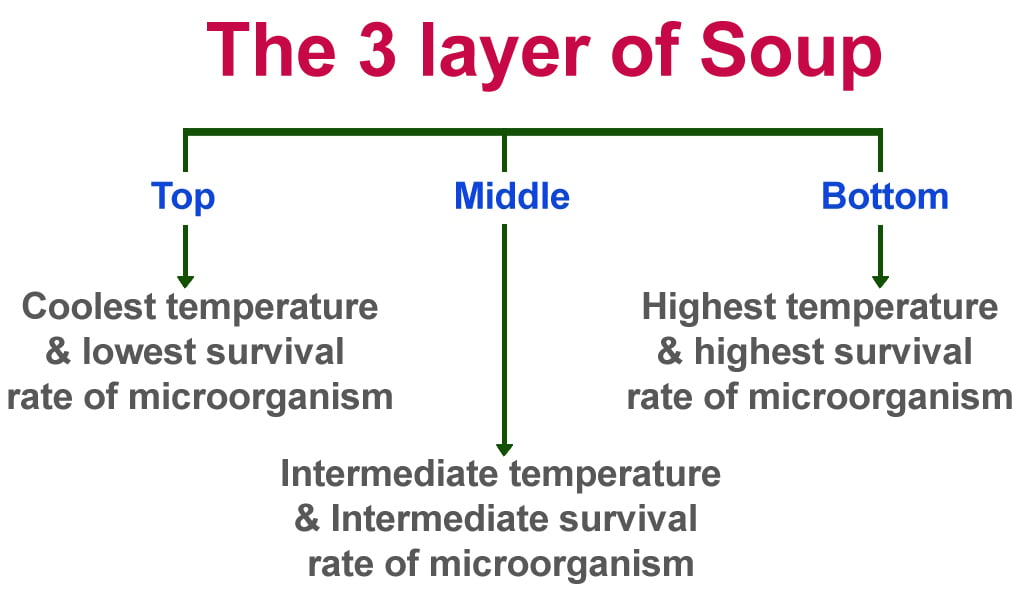
Despite a number of studies done to identify the non-thermal effects of microbial inactivation, the mechanism of destruction is not fully understood. It has been postulated that microwave radiation might be absorbed differently by microbes that affect their molecular structure. This study was eye-opening as it proposed the idea that microwaves help in the destruction of bacteria with the help of non-thermal factors, such as radiation.
Conclusion
This article is intended to help you use microwaves for the right reasons. If you know that a given food item has been out for a long time and might have been mishandled, it is better to reheat it in a conventional oven, rather than a microwave. Although it’s safe to say that a microwave might destroy bacteria and other germs, that might not be the case if the food has a tendency to harbor bacteria, such as in the case of pork. So, if you reheat your food in the microwave because you are eager to get started on your next Netflix series, go for it! However, if you’re heating up the leftovers from a summer picnic, you might want to stay loyal to your good old oven and make sure you stay healthy!
References (click to expand)
- CULKIN, K. A., & FUNG, D. Y. C. (1975, January 1). Destruction of Escherichia coli and Salmonella typhimurium in Microwave-cooked Soups. Journal of Milk and Food Technology. International Association for Food Protection.
- Gessner, B. D., & Beller, M. (1994, May 1). Protective Effect of Conventional Cooking versus Use of Microwave Ovens in an Outbreak of Salmonellosis. American Journal of Epidemiology. Oxford University Press (OUP).
- Radiation: Microwave ovens - World Health Organization (WHO). World Health Organization (WHO)
- Banik, S., Bandyopadhyay, S., & Ganguly, S. (2003, April). Bioeffects of microwave––a brief review. Bioresource Technology. Elsevier BV.

